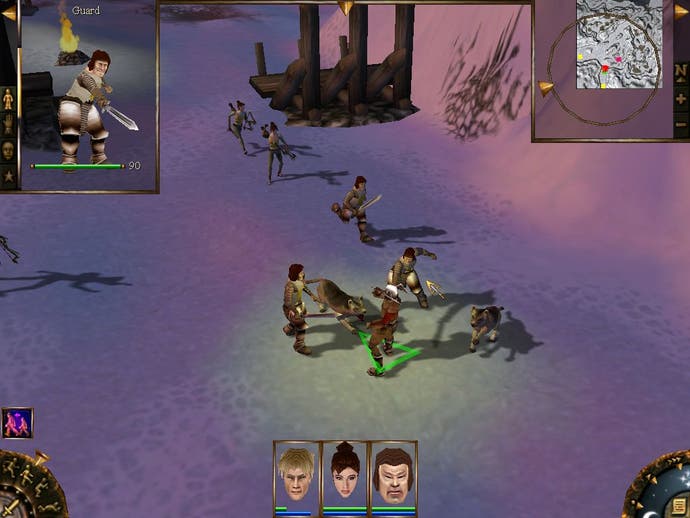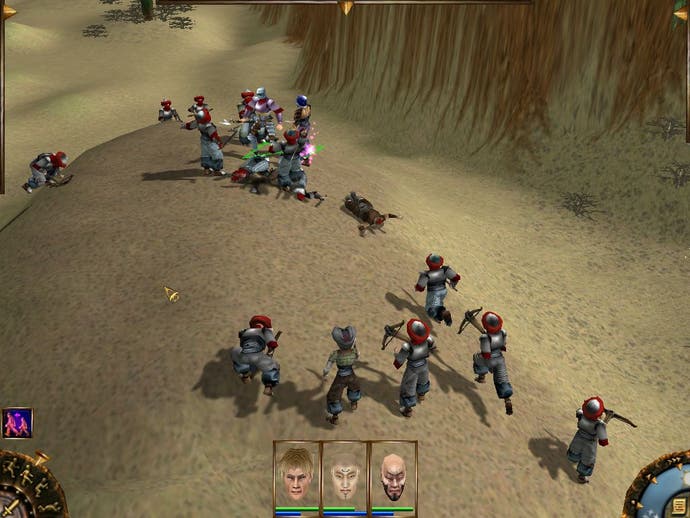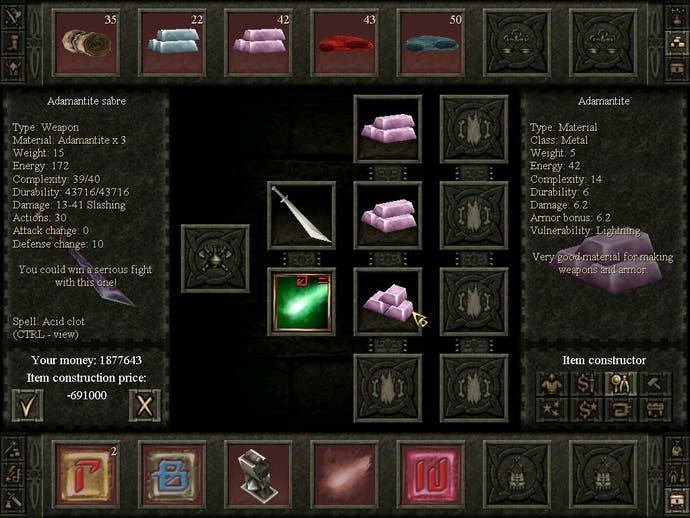Evil Islands : Curse of the Lost Soul
Review - the Russian developed 3D role-playing game finally reaches the west - was it worth the wait?
Some men are born great, some achieve greatness, and others have greatness thrust upon them. Zak, hero of Evil Islands, very much falls into this third category. Waking up amongst the ancient ruins of a strange island with no memory of who he is or how he got there, he is declared The Chosen by the local villagers and promptly co-opted into carrying out a series of menial tasks for them. When you're not killing goblins or wolves you are recovering stolen goods from brigands and filching magical items from the orcs. It's certainly humble beginnings for a would-be messiah.

The Chosen
As you work your way through the game you will gradually gain experience as well as more powerful weapons, armour and magic. But whereas many such role-playing games become mindless hack and slash affairs, in Evil Islands there is always something bigger and meaner than you. Fighting is dangerous at the best of times, and just when you think you have finally created a true tank of a character capable of taking on anything the game can throw at you, along comes a monster which is all but immune to your attacks and can kill you without raising a sweat.
Instead of charging into combat waving a big axe around, you frequently have to rely on stealth and cunning to win the day. Sneak up behind an enemy and you can deliver a backstab attack which, if you spent your experience points on the appropriate skill, can cause a truly obscene amount of damage. Or you can try to crawl around monsters without them ever seeing you. Of course, this all takes patience and skill, and if you lack either of these qualities you will find yourself reaching for the quick load key with alarming frequency.

Everything Is Under Control
Luckily you are not alone for most of your quest. You can recruit two other characters to join you, and most of the time you will have a choice of three possible companions - usually a warrior, a magician and an archer or thief - giving you plenty of variety even before they start earning experience points for you to spend on tweaking their skills and attributes.
The characters can be controlled either individually or en masse through a simple point and click interface, with additional buttons arranged around the edges of the screen to adjust your stance (run, walk, sneak or crawl), cast spells, switch weapons, follow someone, try to pick an enemy's pocket or use an object. If this is still too complicated for you, you can pause the action and give out orders to your characters in your own sweet time. It's all very easy, and there's even a handy little tutorial mission at the beginning to get you used to the basic controls and concepts of the game.
In fact the only real gripe we have with the controls is that your characters are constantly spoiling for a fight; whenever you order one of them to attack somebody, the rest try to pile in. You can order each character to attack a different target, but sadly there is no way to tell one of them to just stay out of it. This can obviously be a nuisance if a character is badly injured but keeps wanting to charge back into battle, or if you are trying to sneak up behind a guard to bop him over the head with a large blunt instrument and the rest of your party suddenly decides to stand up and start firing arrows at him...

Critical Hit
The other quirk of the combat system is critical hits, which frequently cause a huge amount of damage and tend to make combat rather random. When you go up against an enemy which is about the same strength as you, anything can happen - a single lucky blow can knock somebody down to half strength and completely change the balance of the fight. Again, this tends to lead to overuse of the quick load and save keys.
Apart from this slight annoyance though, combat is far more tactical than in most role-playing games. As well as adding the ability to sneak up on enemies for a backstab attack, Evil Islands also allows you to target a specific part of their body with a highly intuitive interface. Just imagine that there is a body spread out on your keyboard's number pad (work with me here), and hold down the appropriate key when you attack - 8 for the head, 5 for the body, 1 and 3 for the legs and 4 and 6 for the arms.
Blows to the head are harder to pull off but cause much more damage, and are best used in combination with a backstab, resulting in a lethal strike which can often kill an enemy outright. Damaging an enemy's legs makes it harder for them to either run away or to pursue you, and hurting their arms reduces the effectiveness of their attacks. Although you can comfortably get through the entire game without ever using this system, it gives added depth for more advanced players and can make your life somewhat easier.

Bigger, Better, Twice As Hard
And anything that can make your life easier is very welcome, as this game is very hard and very long. There are three sizeable islands to explore, each with its own ecosystem and economy, as well as a whole array of quests to complete. Every time you teleport to another island you will soon discover that the weapons and armour you brought with you are all but useless against the new island's monsters and soldiers.
Luckily there is an almost infinite range of new items to upgrade to once you have earned some hard currency. Weapons come in dozens of different forms, and your armour is split into six seperate pieces, from leggings and boots to gauntlets and helmets, each of which can be replaced individually. There are many designs for each class of armour, which vary from island to island, and each is available in a whole range of different materials. For example, a chainmail shirt could be made using anything from common bronze or steel right up to mithril or adamantine, each giving a different balance of cost, weight and effectiveness.
And if you fancy a bit of DIY, you can combine raw materials that you find during your adventures with a blueprint bought from a store to create your own custom weapons and armour. A similar system is also used to customise spells, boosting their effectiveness with runes that can increase damage, duration, range and other factors. There are even runes which can add a spell effect to an object, allowing you to create weapons that fire lightning bolts and armour that heals you or boosts your strength. Once you start meddling with these options the possibilities are virtually limitless.
Conclusion
Evil Islands is a huge, varied and utterly addictive game. Acting and dialogue is a bit hit and miss at times, and the voice acknowledgements when you give your characters orders soon get rather repetitive, but overall the storyline is strong enough to keep you involved in the game. It also looks great, with a solid new 3D engine providing vast open terrain to explore and a wide range of highly detailed characters and monsters, as well as some fairly spectacular spell effects.
The only real let-down is the sometimes random nature of combat, with critical hits being far too common and getting in the way of what would otherwise be a very tactical experience. Still, if you're a role-playing fan looking to lose yourself for a few weeks, this could be just the thing.

